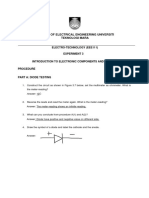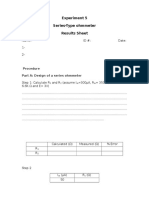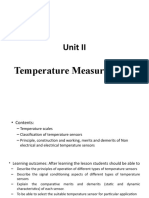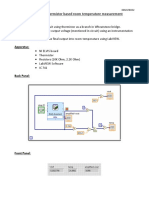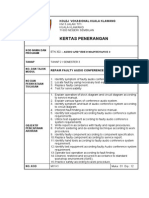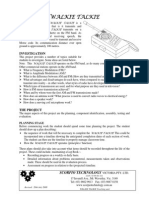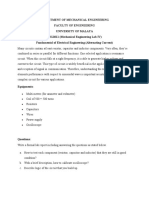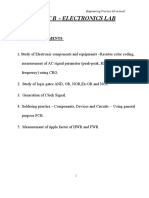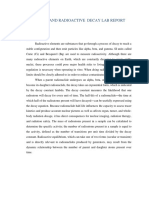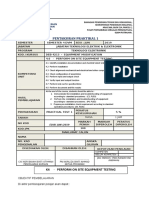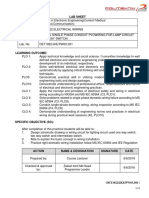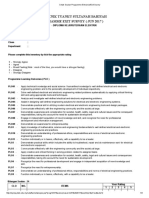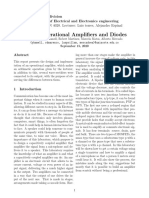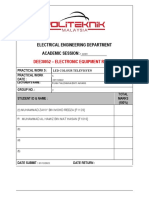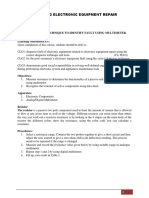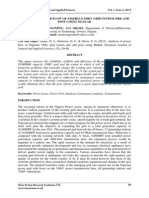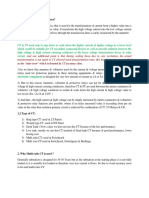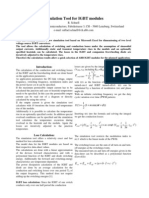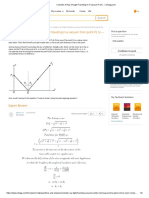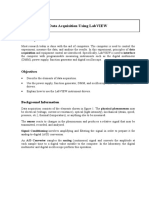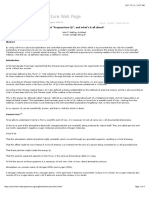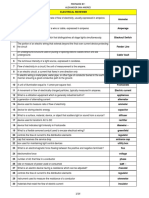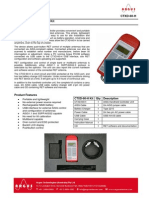DEE 30052 ELECTRONIC EQUIPMENT REPAIR
PRACTICAL WORK: 4
TITLE: AUDIO AMPLIFIER
LEARNING OUTCOMES (LO):
Upon completion of this course, students should be able to:
CLO1: diagnose fault of electronic equipment related to electronic equipment repair using the
correct diagnosis technique and tools (C4, PLO2)
CLO2: fix the post-consumer’s electronic equipment fault using the correct diagnosis technique
(P4, PLO5)
CLO3: demonstrate good social responsibility in solving well defined engineering problems during
performing electronic system and appliances maintenance task (A3, PLO6)
OBJECTIVE:
By the end of this session, student will be able to :
1. Identify the type of transistor
2. Prepare audio generator and oscilloscope to measure the voltage gain of the amplifier
3. Measure DC voltage using multimeter
THEORY:
The most commonly used type of audio amplifier configuration is the Class A Amplifier. The Class A
amplifier is the simplest form of power amplifier that uses a single switching transistor in the standard
common emitter circuit configuration as seen previously to produce an inverted output. The transistor is
always biased “ON” so that it conducts during one complete cycle of the input signal waveform
producing minimum distortion and maximum amplitude of the output signal.
This means then that the Class A Amplifier configuration is the ideal operating mode, because there can
be no crossover or switch-off distortion to the output waveform even during the negative half of the
cycle. Class A power amplifier output stages may use a single power transistor or pairs of transistors
connected together to share the high load current. Consider the Class A amplifier circuit below.
1
� Single Stage Amplifier Circuit
This is the simplest type of Class A power amplifier circuit. It uses a single-ended transistor for its output
stage with the resistive load connected directly to the Collector terminal. When the transistor switches
“ON” it sinks the output current through the Collector resulting in an inevitable voltage drop across the
Emitter resistance thereby limiting the negative output capability.
EQUIPMENT / TOOLS:
1. Variable DC Power Supply,
2. Multimeter,
3. Audio generator,
4. Oscilloscope,
5. Resistor 47kΩ / 10kΩ / 2.2kΩ / 560 Ω,
6. Capacitor 10μF (2) / 220 μF,
7. Transistor BC107
2
�PROCEDURES:
1. Connect the circuit as shown below.
Figure 1
From the circuit in figure 1, calculate value of :
VB =
VE =
VC =
3
� 2. Measure the dc voltage and waveform between the base of TR1 and ground. Record as VB and
waveform at Table 1.
3. Measure the dc voltage and waveform between the emitter of TR1 and ground. Record as VE and
waveform at Table 1.
4. Measure the dc voltage and waveform between the collector of TR1 and ground. Record as VC
and waveform at Table 1.
5. Remove R1 connection and repeat procedure 2 until 4.
6. Reconnect R1 into the circuit and remove R2. Repeat procedure 2 until 4.
7. Repeat procedure 5 and 6 for R3, R4 and C1 & C2.
8. Short C1 and repeat procedure 2 until 4.
9. Reconnect C1 into the circuit and short C2. Repeat procedure 2 until 4.
RESULTS:
Table 1
VB VC VE Waveform
Calculation
Normal Measure
Open R1
4
�Open R2
Open R3
Open R4
Open C1
Open C2
Short C1
Short C2
5
� (40
marks)
DISCUSSIONS: Discussion should include problem occurred during troubleshooting and its solution.
_____________________________________________________________________________________
_____________________________________________________________________________________
_____________________________________________________________________________________
_____________________________________________________________________________________
_____________________________________________________________________________________
_____________________________________________________________________________________
CONCLUSION: Summarize your experiment by relating to the objective of this experiment.
_____________________________________________________________________________________
_____________________________________________________________________________________
_____________________________________________________________________________________
_____________________________________________________________________________________
_____________________________________________________________________________________
_____________________________________________________________________________________
Notes :
R2
VB xVcc VBE silikon 0.7V
R1 R 2
VBE germanium 0.3V
VE VB VBE
VE
VC VCC ICRC , IC IE
RE



